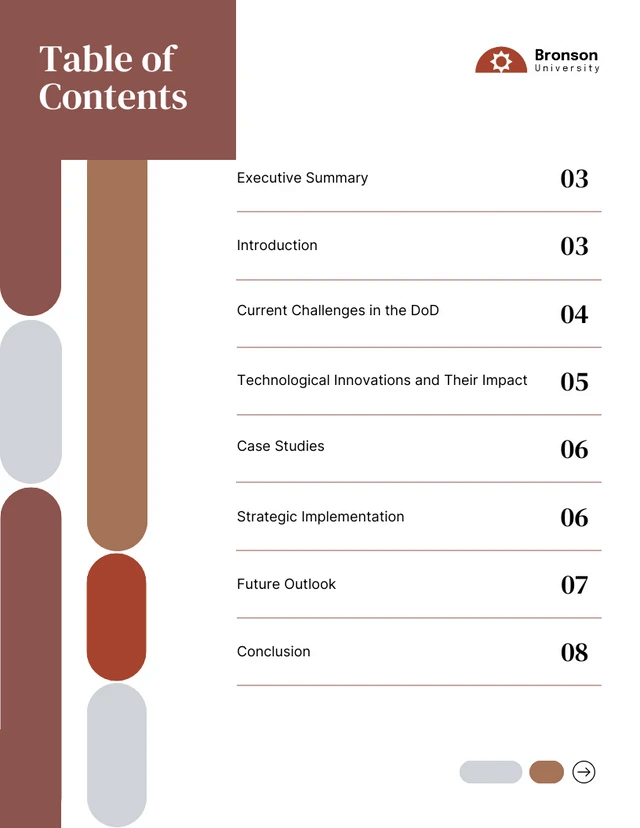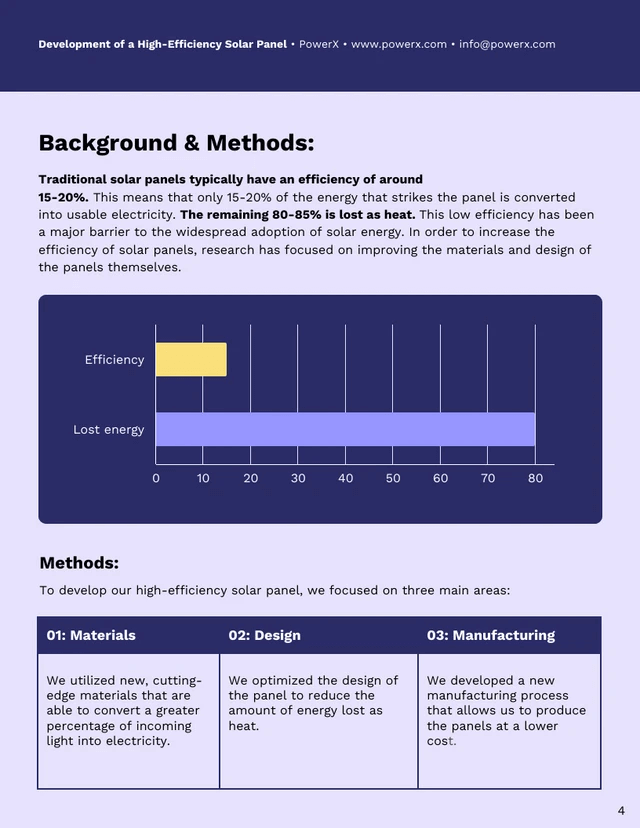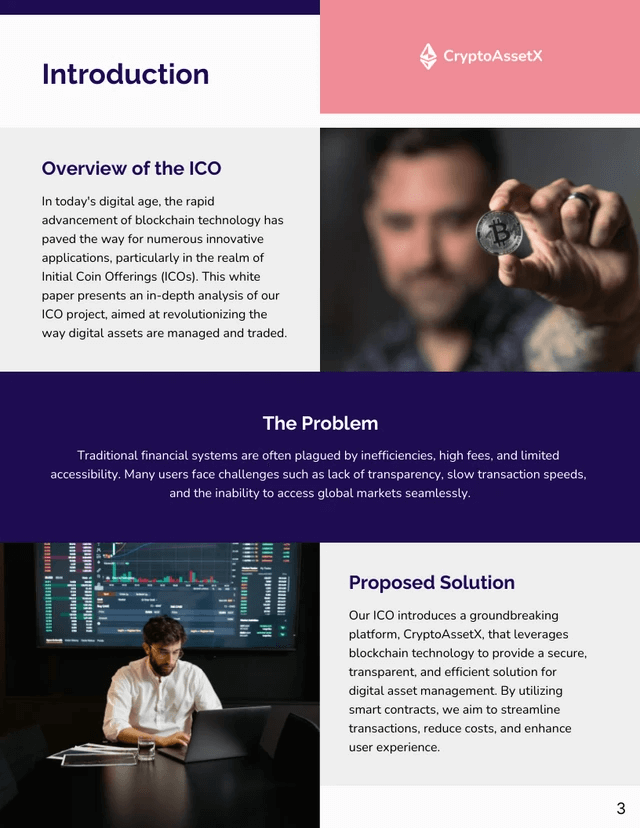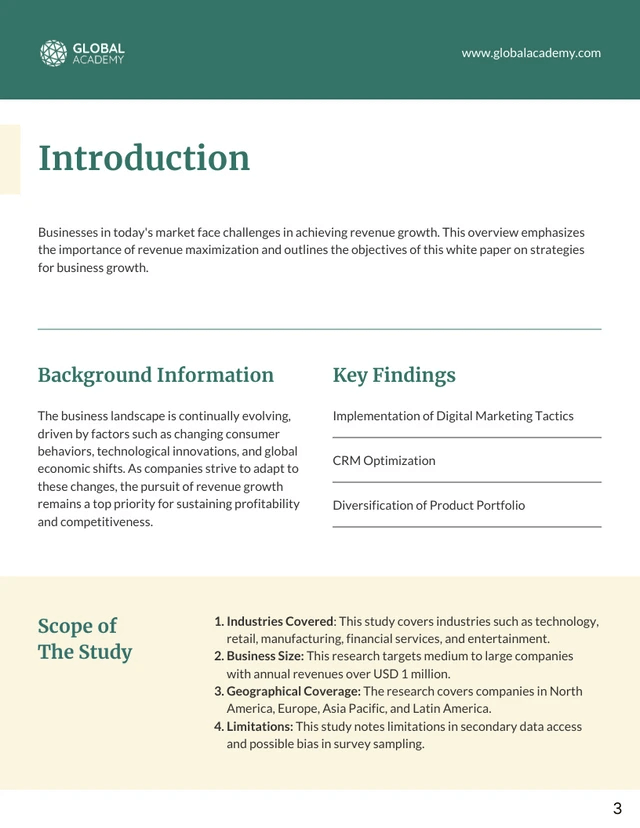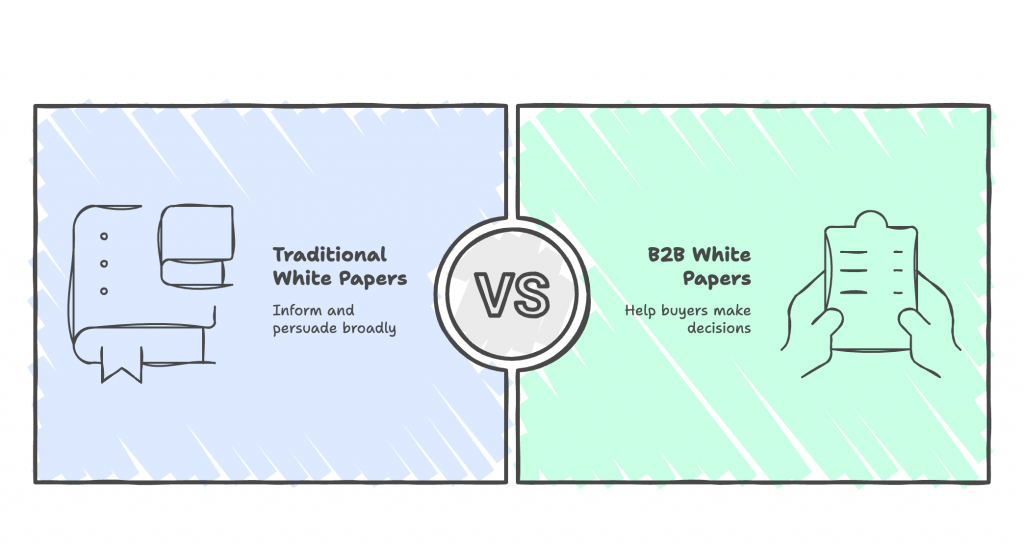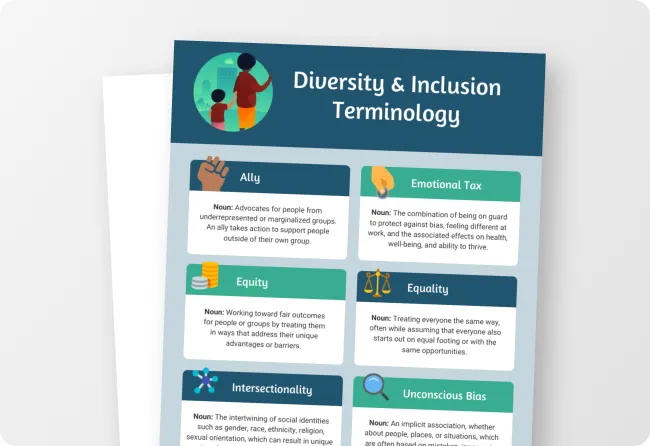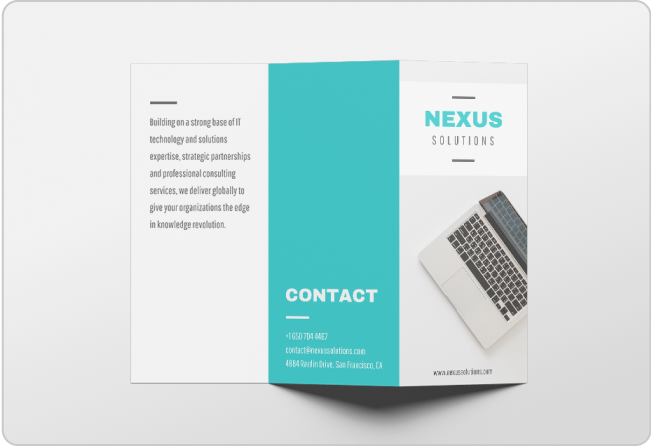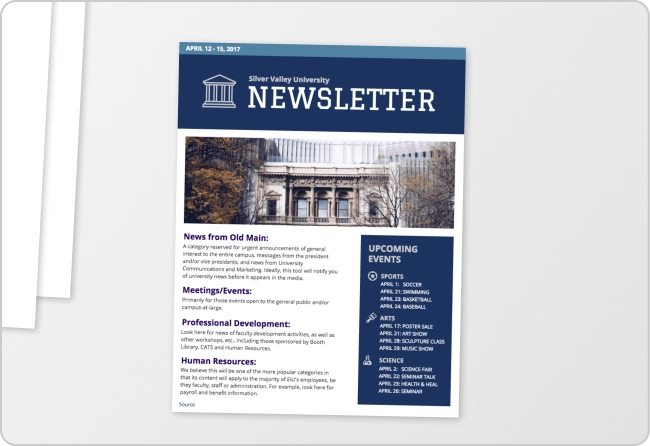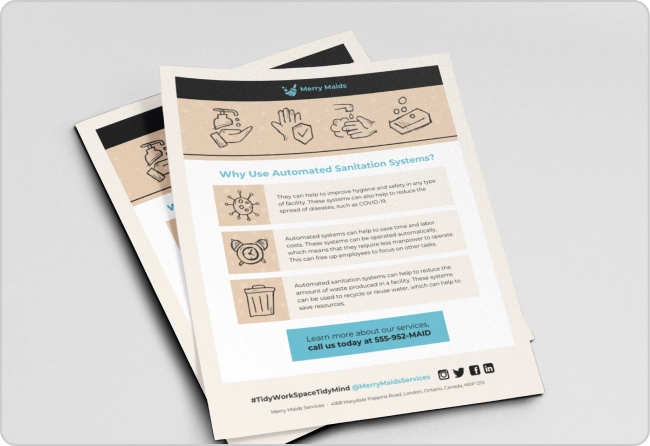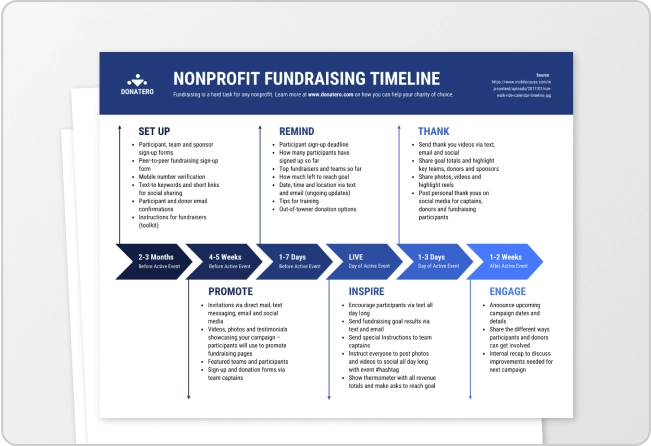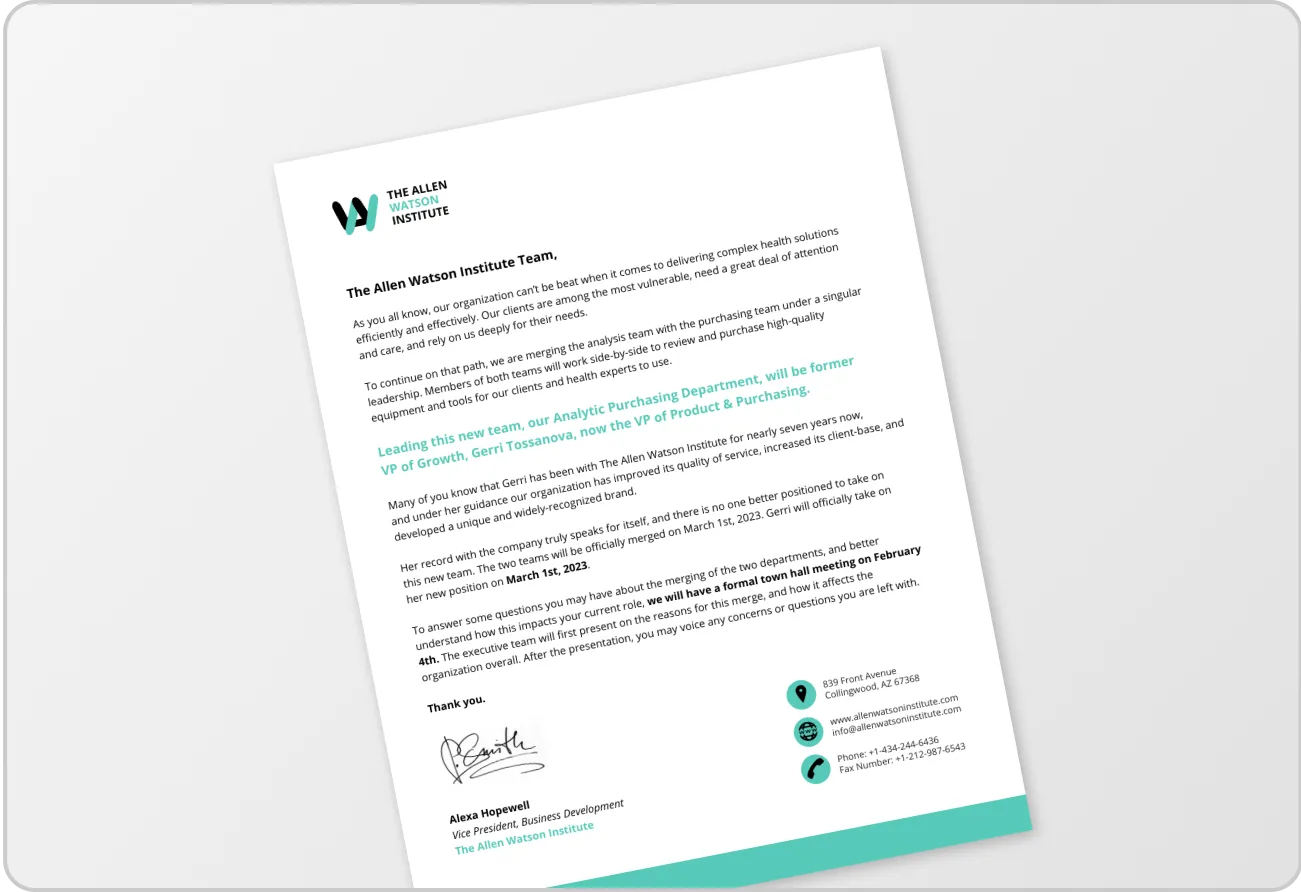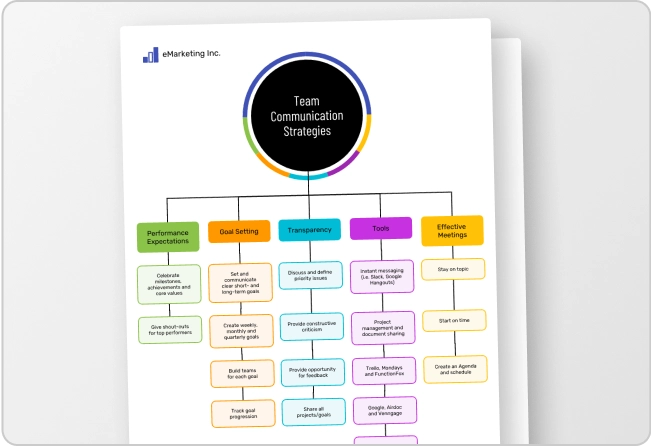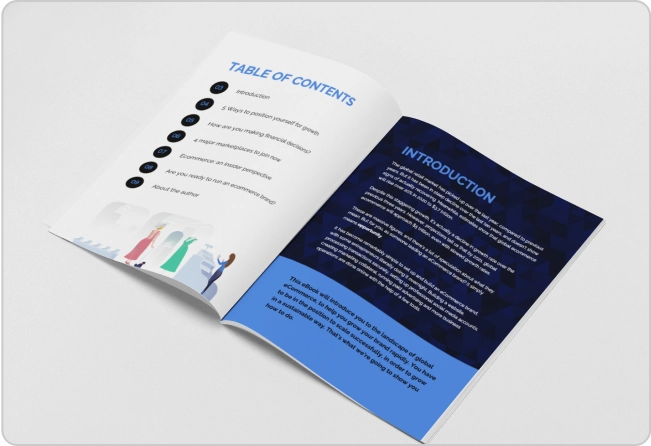
B2B content is hanging on by a thread today. Thanks to AI, we see the same insights and ideas everywhere. It’s no wonder people are calling B2B content the “Sea of Sameness.”
Add to it words like ‘automate,’ ‘align,’ ‘streamline’ and ‘unleash.’ They fill space without offering substance. For decision-makers looking for clarity or direction, they’re dead ends.
If you want to stand out, you need to share original insights and establish authority through data-driven insights. White papers can help you do that.
In this article, I will tell you how to design a winning B2B white paper and share some B2B white paper examples.
Why do B2B white papers matter in 2025?
B2B purchases are expensive. Therefore, the buying journey typically involves multiple stakeholders and often spans several weeks of research and evaluation.
White papers support this journey. They help potential customers understand the problem, explore solutions and justify decisions internally. White papers give you a solid opportunity to establish authority.
According to research by the Content Marketing Institute, 51% of B2B marketers use white papers and ebooks to market their products.
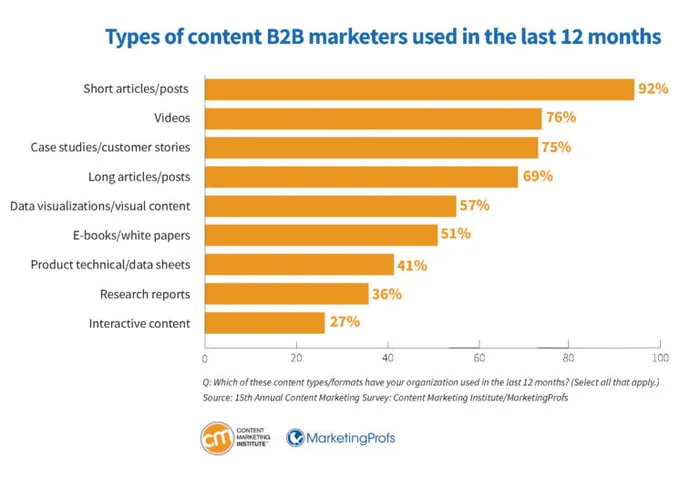
Source: Content Marketing Institute
White papers generally serve three purposes: explain an issue, solve a problem and enable readers to make a decision.
Here’s how B2B white papers can help your business in 2025:
- Establish authority: Share research, data, or a unique point of view that signals you know the space better than most. Most buyers are tired of fluff. A well-structured white paper shows you’ve done the work and helps with content saturation.
- Generate qualified leads: Offer prospects something worth exchanging their email for. A good white paper brings in people who are already curious, not just casual scrollers. According to Demand Gen’s Content Preferences Survey Report, 45% of B2B buyers find white papers valuable in the early stages of their journey.
- Fuel your content engine: One white paper can be repurposed into blogs, social posts, email series and webinars. It’s a long-term asset.
- Support your sales team: Sales teams need more than a pitch deck. A white paper helps explain the problem and solution clearly, especially in longer deal cycles.
- Move buyers through the funnel: White papers give your audience the context they need. What the problem is, why it matters and what solutions are worth considering. They help buyers connect the dots and make a decision.
How to write a B2B white paper (Step-by-step guide)
A high-converting white paper should cover three things: industry trends, customers’ pain points and your product’s value proposition.
Step 1: Define your audience and goal
Before you start writing, be clear on two things:
Audience: Who are you writing this for? Think about demographics, industry, role, team size and challenges.
- A CTO comparing data tools?
- A head of marketing evaluating ABM platforms?
- A procurement team making the final shortlist?
Each audience needs a different level of technical depth, tone and framing.
Goal: What should the reader take away from this paper?
- Are you trying to explain a new category?
- Do you want to reframe an existing problem?
- Is this meant to support a product launch?
Once you decide the goal, move backwards to plan your research and collect data.
One of the most common mistakes is approaching white paper writing like it’s just another blog post. A blog post can be broad, conversational, or written for SEO. But a white paper needs to be sharp, credible and tailored to the reader’s specific pain points.
Pro Tip: When writing a B2B white paper, shift your mindset from informing to advising. Define the reader’s biggest pain point and back it up with credible data and give actionable recommendations.
Step 2: Research and gather data
The next step is to come up with a topic. You need something that is both relevant to your audience and ties back to your product.
Here are a few ways to understand your customers and gather data:
- Join communities: Look at where your audience hangs out — Slack groups, industry forums, private newsletters. Pay attention to the questions they’re asking and the language they’re using.
- Talk to your sales team: Talk to your sales team or check sales transcripts to understand common questions or themes prospects have. Use those insights to understand customers’ pain points.
- Browse Reddit threads: Subreddits like r/sales and r/marketing are underrated research platforms. You’ll often find challenges and use cases no one’s blogging about yet.
- Watch how people engage on LinkedIn: Scroll through LinkedIn comments and reposts to understand what kind of posts spark conversation. What topics keep coming up?
- Listen to podcasts in your niche: Podcasts are especially helpful for understanding how senior leaders think. You’ll learn about their actual experiences, the products they use, the frameworks they rely on and their challenges. From there, you can shortlist a topic that speaks directly to their needs.
Remember that your topic should either solve a problem, fill a gap, or educate the readers.
This fintech B2B white paper example by Expleo explains how fintech startups and banks should partner to tackle technological disruption. The paper explains the challenges faced by both parties and how a strategic partnership could benefit them.
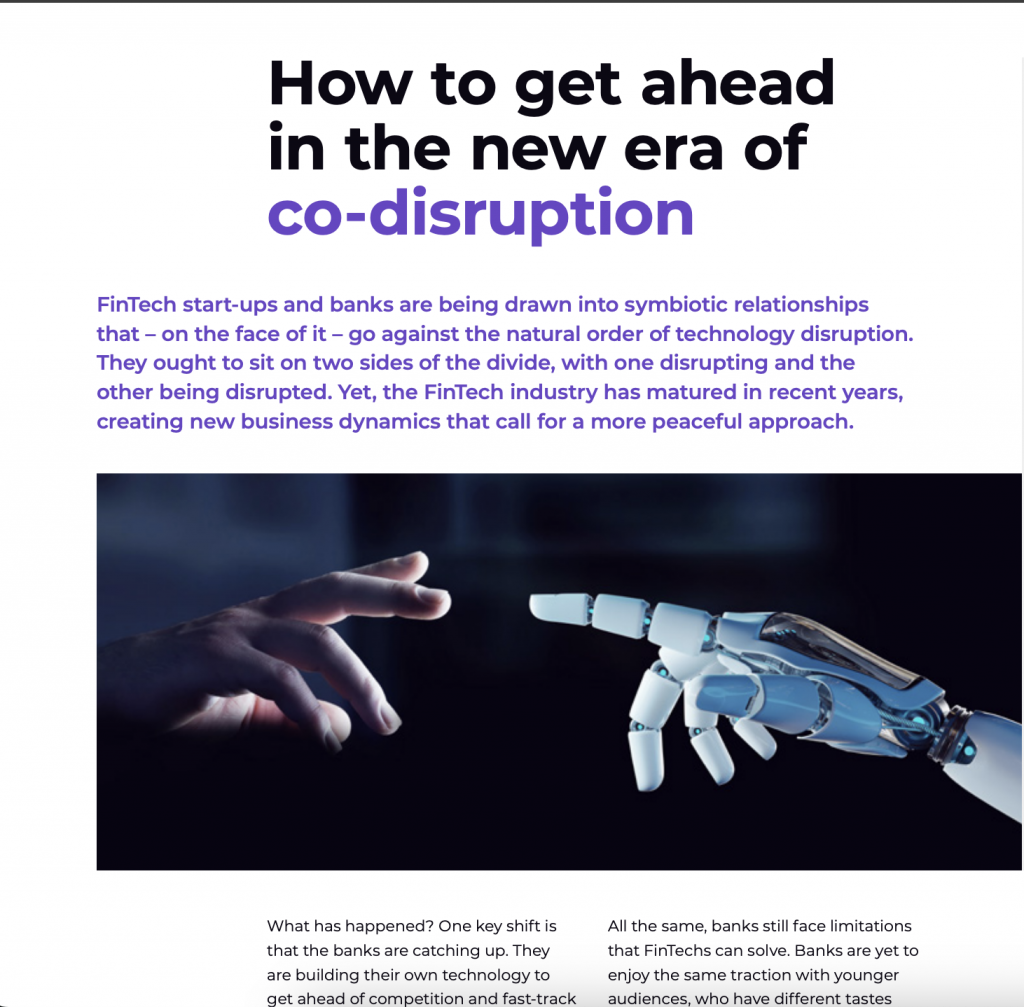
Source: Expleo
Step 3: Create a strong outline
Now it’s time to put together all the gathered insights. Create a rough structure or outline so you can decide the broad ideas you want to cover in the white paper and the narrative you want to follow. You can refine the outline as you start writing.
A B2B white paper usually includes the following sections:
- Executive summary
- Introduction or background
- The core problem or challenge
- Your insights, solution, or framework
- Supporting data or case studies
- Conclusion or key takeaways
- Call to action (optional, but useful if you’re driving next steps)
For example, this white paper template on using technological innovation in the defense sector includes a clear outline with an executive summary, introduction, challenges, solution and case studies. It’s a good reference for structuring a complex topic.
Remember that a white paper is not a sales pitch. Focus on providing the solution first and then talk about your product.
“The key to generating leads with white papers is for the content to avoid a hard-sell. This means avoiding the mention of your company or product in the first half of the white paper. When prospects begin to sense they are being sold to, the white paper shifts from being a valuable resource to just another marketing message.”
Michael Stelzner, Founder of Social Examiner
Step 4: Write in a structured format (problem > solution > proof)
Start with the problem statement
Start with the industry problem. What’s broken, confusing, or inefficient? What’s keeping your reader up at night?
This isn’t the time to pitch your product. It’s time to educate your readers. Lay out the problem clearly, then present your perspective or solution. Support it with data, examples, case studies, or a framework.
No matter what outline you follow, keep this basic white paper format in mind:
Problem → Solution → Proof.
The white paper on ‘How to Write a White Paper’ by Stelzner Consulting explains this well.
“By focusing on the pain points experienced by the reader and talking about the problems caused by those pains, you are establishing credibility with the reader and simultaneously filtering out unqualified customers.”
How to Write a White Paper by Stelzner Consulting
Add a unique pov
While focusing on the problem is enough, you also need to also add a unique point of view in the white paper.
Your reader isn’t starting from scratch — they’re often scanning to find something useful. They might be comparing vendors, building a case internally, or just trying to understand a complicated topic faster.
You have to guide the conversation so they know where to focus. Otherwise, you risk losing them halfway through.
Gordon Graham, popularly known as the ‘White Paper Guy,’ explains this really well.
“To create a strong white paper, take a position! A strong point of view is one that someone can argue with. That means taking a stand, a position that might even—gasp—offend someone.”
Gordon Graham, The White Paper Guy
For example, Clarify Health’s white paper on ‘Precision Analytics for Life Sciences’ challenges a common belief: that large healthcare organizations should build their own enterprise-level analytics platforms.
It explains that building internally is expensive, slow and resource-heavy. Instead, the paper argues that healthcare teams should adopt precision analytics platforms that are already built for speed, segmentation and scale.

Source: Clarify Health
Step 5: Design the white paper
Here comes the tricky part. Writing your white paper in Word or Google Docs is one thing, but designing it is where most teams hit a wall.
The challenge is figuring out how to present dense information without overwhelming the reader. You need to choose the right fonts, add charts to visualize data and use a clean layout to guide attention.
This will help drive the communication and set a proper narrative.
Focus on three things while designing your white paper:
- Make the content scannable: Use headers, bullets and whitespace to break long sections. No one wants to read a solid wall of text.
- Highlight the most important ideas: Pull quotes, charts and stat blocks help key insights stand out at a glance.
- Reflect your brand: Ensure fonts, colors, and icons feel cohesive. A well-designed paper reinforces your credibility.
If you don’t have a design team, Venngage’s AI White Paper Generator can help you turn your draft into a polished white paper, without starting from scratch.
Add a clear prompt explaining your topic, target audience, white paper goal and any visual guidelines.
Here’s a sample B2B white paper I created using Venngage’s AI White Paper Generator.
Prompt: Create a B2B white paper on how marketing teams can improve campaign ROI for CMOs. Include key challenges, practical solutions, industry stats and charts that show ROI improvements over time.
Output:
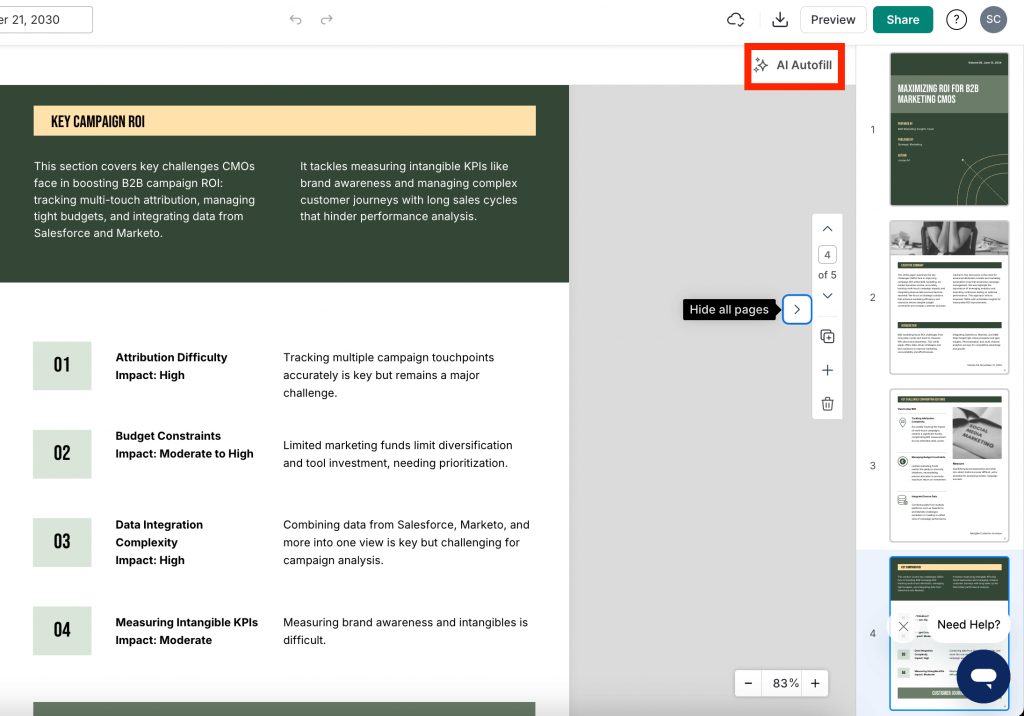
Once the design is ready, go to the AI Autofill feature and paste your content in the box. The AI tool will customize the white paper as per your content. It also automatically changes the icons and images to align the visuals with your content.
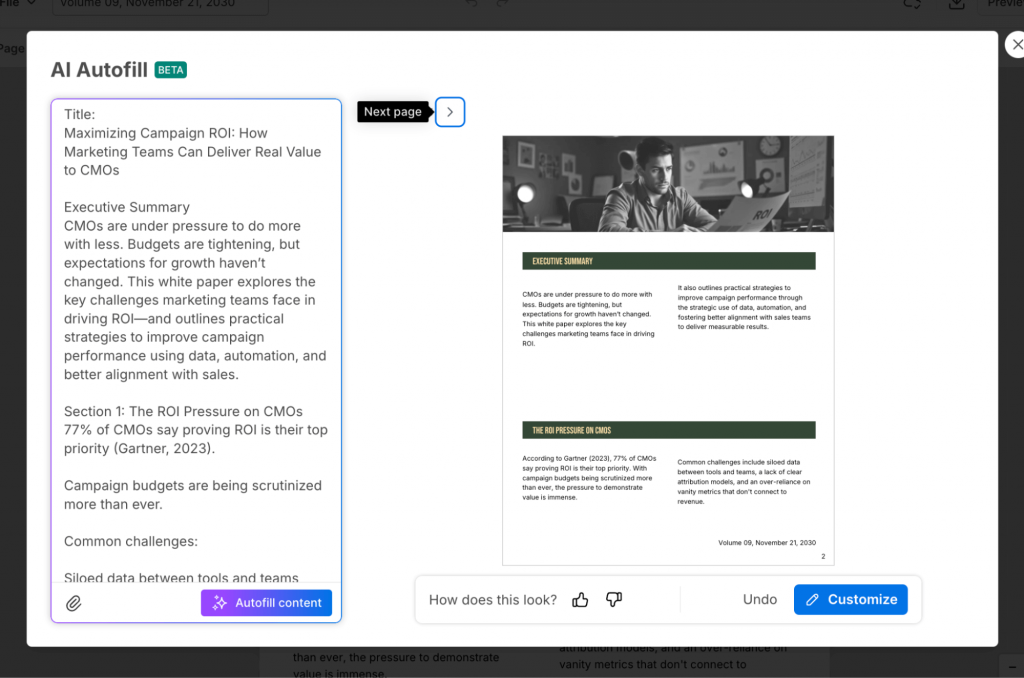
The best part about using Venngage’s AI White Paper is that you can customize it using Venngage’s Brand Kit feature. Add your brand’s color palette, brand logo and other visual assets, in just a few clicks.
With Venngage’s AI White Paper Generator, you can also:
- Add charts for statistics
- Replace icons and images
- Explore white paper templates
Step 6: Edit, review and format for download
Once the design is ready, sleep over it and review it with fresh eyes. Check for typos, revisit the flow of the content and make sure the visuals actually support what you’re saying — not just fill space. Your charts, callouts and quotes should feel consistent with the rest of the white paper.
It’s also important to make the white paper accessible. If you’re using Venngage, the built-in Accessibility Checker can help flag issues like low contrast, small fonts, or cluttered layouts that might be hard to navigate for someone with a visual impairment.
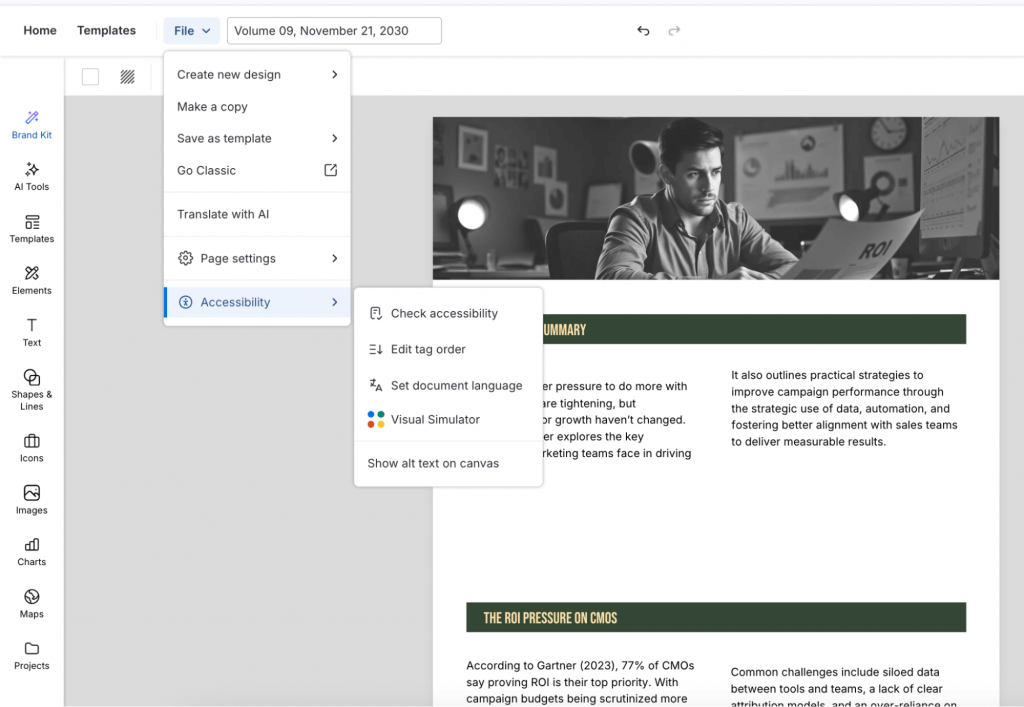
Already exported it as a PDF? Use Venngage’s Free PDF Accessibility Checker. Upload your file and it’ll give you suggestions to improve readability and accessibility.
Here’s a quick checklist to design your B2B white paper:
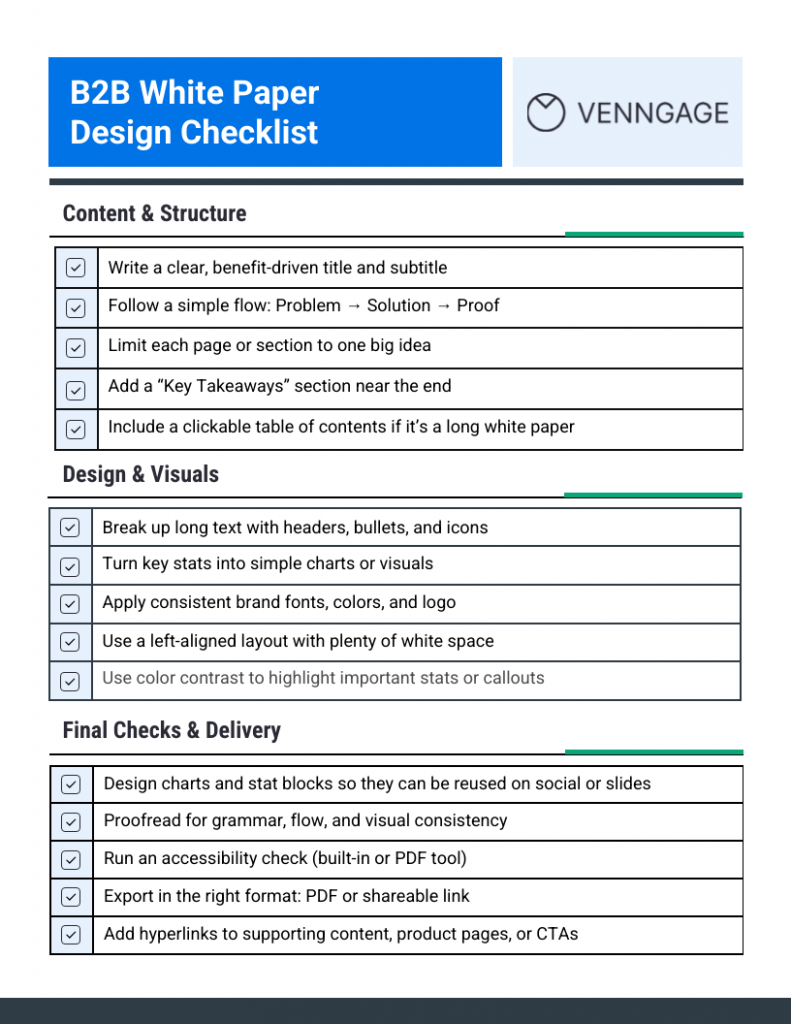
How to distribute and promote your white paper?
Your white paper is finally reading after months of planning, research, writing and design. Now comes the part that often gets rushed: distribution.
But the challenge is that the audience is niche, busy and overloaded with content. So unless you share your white paper strategically, it’s easy for all that work to go unseen.
Here are some of the best ways to distribute and promote your white paper:
1. Create a dedicated landing page
Add your white paper to the Resources or Insights section of your website with a clear headline, summary and preview. Treat it like a product.
Here’s a good example from Philips:
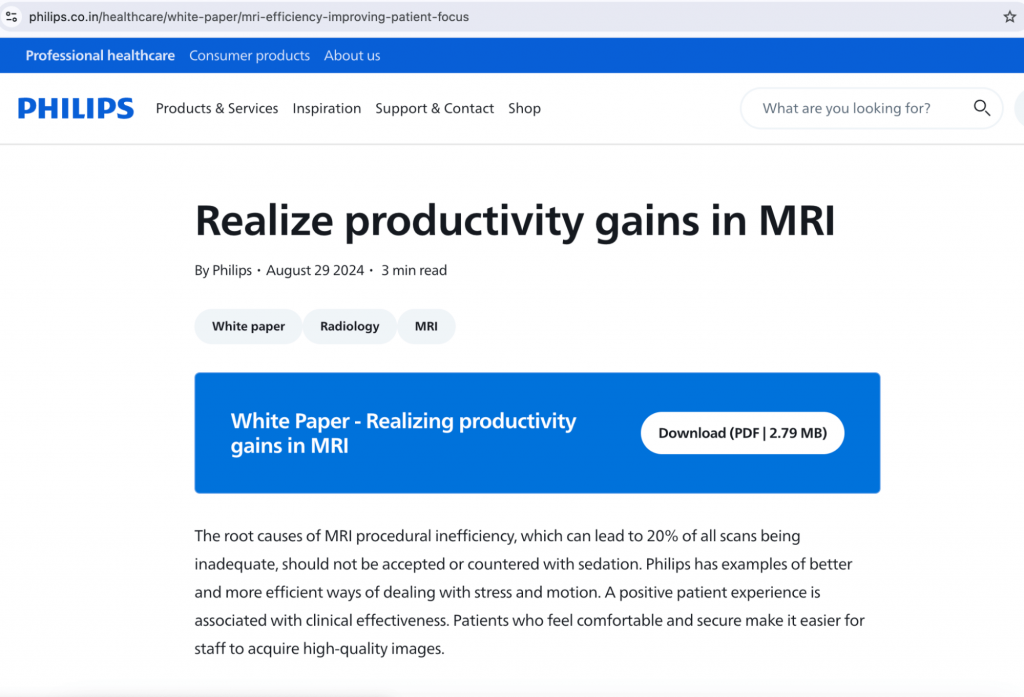
Source: Philips
2. Rethink gated content
Not every white paper needs to be locked behind a form. Ask yourself: Would I give up my contact info to download this if I didn’t know the brand?
“Great marketers are prioritizing their audiences’ experience. They’re making content readily available to them—only using gated content when it’s valuable or unique, or if they want to run dedicated lead generation campaigns.”
Chloë Addis, Head of Marketing at Headley Media
Here’s a quick experiment I did.
I searched for ‘data analytics white paper’ on Google. The white papers by Amazon and OpenAI opened directly as PDFs in the browser — quick and easy to access. No details required.
The other two links on the page asked for information to download the white paper. As a reader, I would naturally open the direct PDF links first rather than sharing my information on other websites.
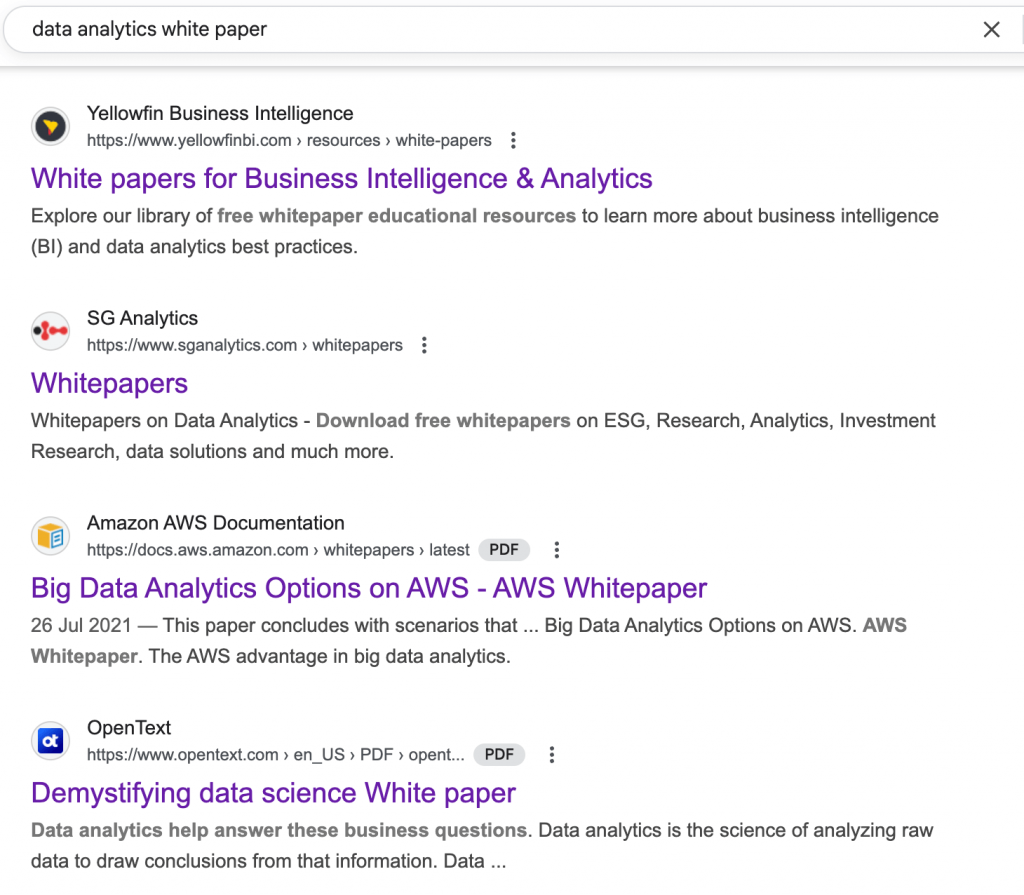
It’s a small detail, but it says a lot about how we value our audience’s time. So, next time you try to share a white paper, check if you can make it ungated.
A white paper is only valuable if the right people read it. Instead of blasting it to your entire list, break it down by audience.
If it’s written for CTOs, send it to your tech segment. If it addresses demand gen strategies, send it to marketing leaders.
Keep the email short. No long intros or company history. Start with a sharp subject line, include 1–2 lines explaining the benefit and add a visual preview or pull quote from the white paper. Think of it as an invitation, not an announcement.
If you’re using a tool like HubSpot or Customer.io, you can track opens and clicks to identify who’s genuinely interested — and follow up accordingly.
The best way to promote your white paper is to repurpose it into social media visuals. You can pull stats, quotes, or charts and turn them into infographics for LinkedIn or X.
Venngage’s AI Infographic Generator can help you repurpose white paper into social media visuals.
Let’s say your white paper explores how marketing teams can improve campaign ROI. You can pull out one key stat, such as average ROI benchmarks by channel, and create an infographic to share on social.
Here’s an infographic generated using Venngage:
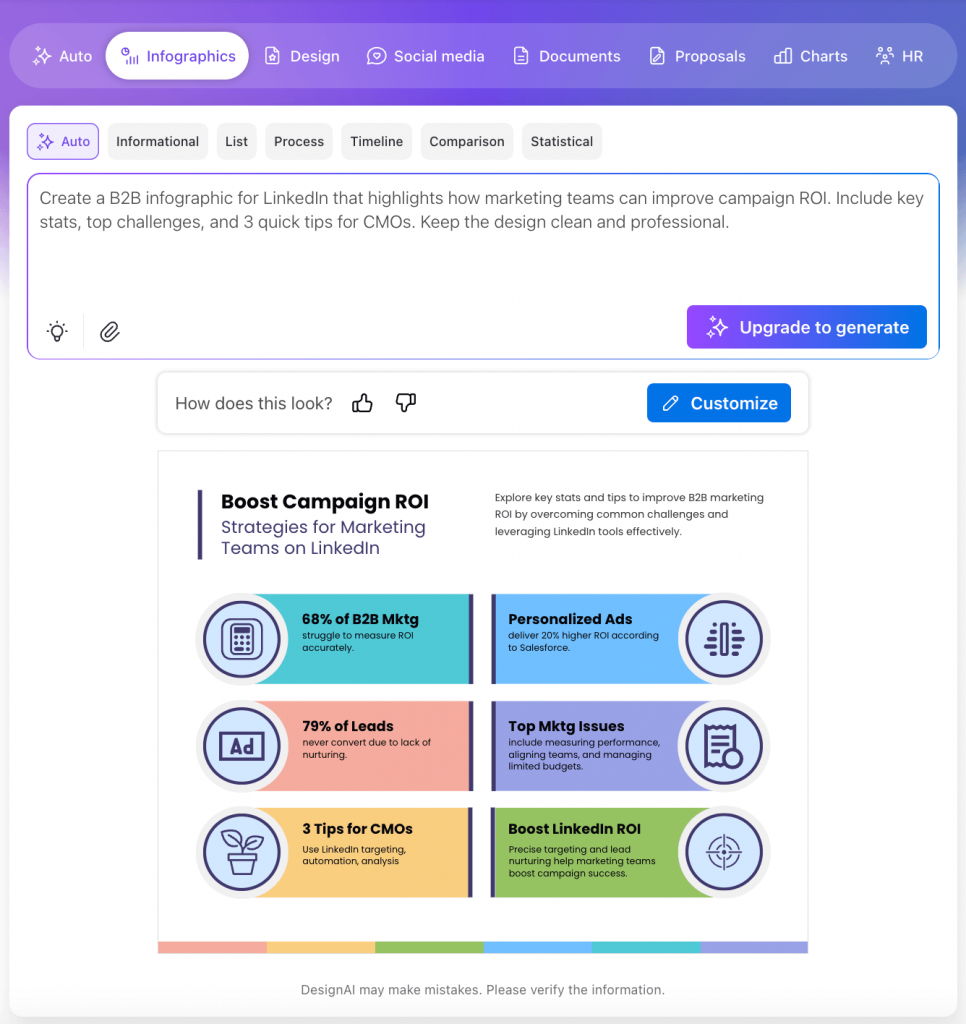
You don’t need to share all the visuals in one go — use the content slowly over a few weeks. Turn the conclusion into a carousel. Use one of the frameworks or tips as a single image post. Share a behind-the-scenes view of how the paper was created.
This approach extends the shelf life of your white paper and helps you reach people who scroll but don’t always download.
5. Collaborate with sales
Your sales team talks to the same people you wrote the white paper for. So create a one-slide summary with the main insight or takeaway. Pull 2–3 key stats they can drop into conversations. Add the white paper as a follow-up resource in outbound emails or after demo calls.
You could even co-create a version with sales to create something shorter, more visual, built for pitch decks. That way, the white paper doesn’t just live on your website. It starts showing up in real sales conversations, where it can actually move deals forward.
Here’s a white paper distribution checklist by Foleon:
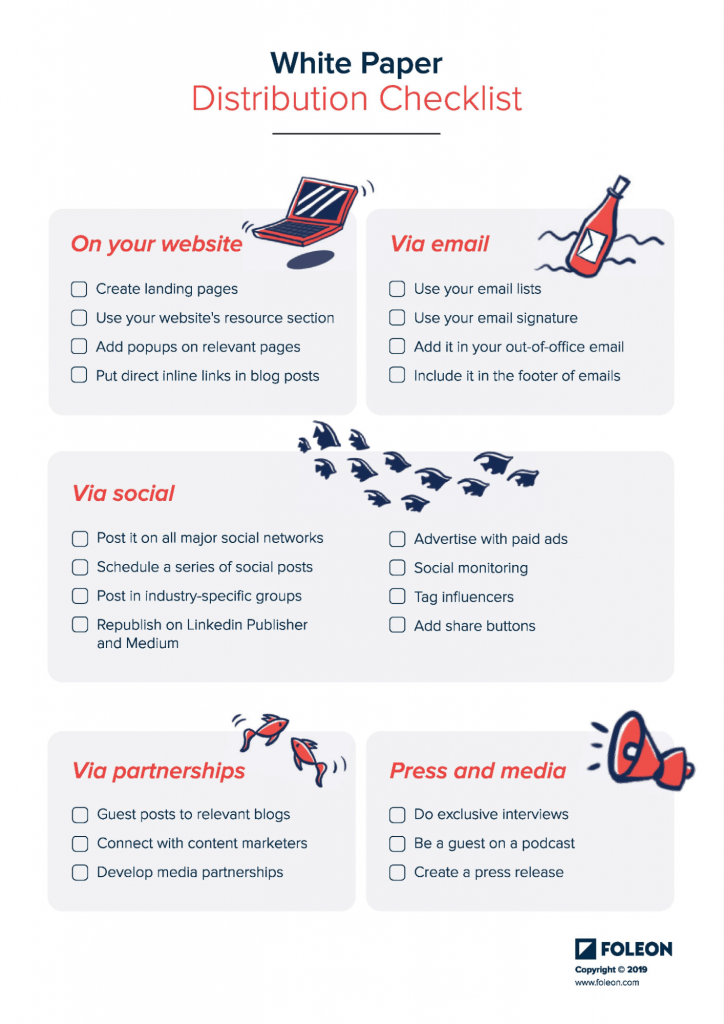
Source: Foleon
What makes a white paper convert better?
Here are the key things that can help you create a high-converting B2B white paper:
- Clear audience focus: Make it obvious who this is for and what problem it solves. Speak to one specific buyer, not a vague “business leader.”
- Original data or insights: Share internal benchmarks, survey results, or patterns you’ve spotted across clients or the industry.
- Actionable takeaways: Give the reader something they can apply right away, such as a framework, a checklist, or even a one-page reference.
- Contextual CTAs: Add contextual prompts throughout. Don’t wait till the end to ask them to book a demo or explore more.
How to track white paper performance?
Tracking white paper performance goes beyond download numbers. Look at where readers drop off, how qualified your leads are, and whether the content is helping move opportunities through the pipeline. Here are the key KPIs to monitor:
1. Landing page & conversion performance
Measure how well your white paper offer converts visitors into leads. For this, you can track:
- Pageviews
- Traffic sources (organic, paid, social, etc.)
- Bounce rate
- Time on page
- Conversion rate (% of visitors who download)
- Form abandonment rate
How to track: Use tools like Google Analytics, HubSpot, or your form builder to monitor traffic, bounce rate, time on page, traffic sources and form conversions.
2. Lead quality and engagement
- Lead quality (based on ICP fit: title, company size, industry)
- Return visits from leads
- Engagement with follow-up emails (open rate, click-through rate)
How to track: Score leads in your CRM based on firmographic data and use email platforms (like HubSpot or Market) to track return visits and engagement with your nurture emails.
3. PDF interaction & CTA engagement
Use smart PDF tools to see how people interact with the white paper itself.
- Time spent reading
- Section drop-off points
- In-PDF CTA clicks (e.g. “book demo,” “read case study”)
How to track: Use smart document tools like DocSend, Turtl, or Adobe Analytics to track reading time, section drop-off and CTA clicks within the white paper.
What are the different types of B2B white papers
There are six main types of B2B white papers depending on the purpose.
1. Backgrounder
This explains how your product, platform, or service works, including what it does, how it’s built, and why it matters. It’s detailed and usually technical.
When to use it: Useful during product launches or when targeting technical buyers who need to understand the mechanics before they commit.
2. Problem/Solution white paper
This is your classic B2B white paper format that discusses a real industry challenge and then introduces your perspective or approach to solving it.
When to use it: Mid-funnel. Helps readers understand the problem and shows how your solution fits in, without turning into a sales pitch.
3. Visionary/Thought Leadership white paper
Such white papers offer a big-picture view of where the industry is headed. They show your brand’s strategic thinking and not just your product’s benefits.
When to use it: Awareness stage or brand-building campaigns. Helps position your company as a leader in the space.
4. Research-led white paper
A research-based B2B white paper is built around proprietary research, survey data, or benchmarking studies. The goal is to offer original insights that others can’t find anywhere else.
When to use it: Anytime you want to establish authority, drive backlinks, or create shareable, high-value content that stands out.
How are B2B white papers different from traditional white papers?
When most people hear “white paper,” they picture a dry, technical document or a government policy brief. But B2B white papers are a different breed altogether.
A traditional white paper usually aims to inform or persuade at a broad level. Think public policy, academic research, or thought leadership for general consumption. It’s formal, often theoretical, and not always tied to a specific commercial outcome.
B2B white papers, on the other hand, are built for buyers. They help potential customers understand a problem, evaluate possible solutions, and build a case internally. You’re writing for people who are trying to make a smart business decision—often with high stakes involved.
A few key differences:
- Audience: Traditional white papers might target policymakers or researchers. B2B white papers are written for executives, department heads, or teams evaluating vendors or tools.
- Tone and structure: B2B white papers are more actionable. They’re structured to take the reader from problem to solution and include proof points like data, case studies, or frameworks.
- Purpose: In B2B, the goal is to educate while subtly positioning your product or point of view. It’s not a sales pitch, but it’s not neutral either. You’re guiding the reader toward a perspective that aligns with your solution.
So while both formats rely on clarity and credibility, a B2B white paper is much more strategic.
Related: White Paper vs. Case Study: Key Differences Explained
What’s the difference between white papers, reports and proposals?
White papers explain a problem and offer a perspective or solution. They’re research-driven and help readers understand complex topics so they can make informed decisions.
Reports are designed to present data, findings, or analysis without taking a position. Think survey results, benchmarks, or market overviews.
Business proposals are action-oriented. They outline a plan or solution tailored to a specific client or project, usually with pricing, timelines, and deliverables.
How SaaS companies use white papers to boost conversions?
For SaaS companies, white papers are more than just top-of-funnel content. They’re used to build credibility, explain complex problems, and guide decision-makers through the buying process.
Here’s how they help convert:
- Educate the buyer: A well-written white paper helps buyers understand their challenge and why it matters now. It makes your product category feel essential, not optional.
- Support sales conversations: Sales teams often use white papers as follow-ups or leave-behinds. It’s a way to stay top-of-mind and reinforce key points after a call.
- Segment and qualify leads: If someone downloads a technical deep dive or a strategy-led white paper, you know they’re further along in the decision process.
- Position the product: Without hard selling, SaaS white papers subtly frame the problem in a way that your solution addresses best. That’s where trust begins.
SaaS brands like HubSpot, Notion, and Salesforce often use white papers to move buyers from research to evaluation, especially for high-consideration or enterprise offerings.
FAQs about B2B white papers
1. What qualifies as a white paper in B2B?
A white paper is a research-driven document that explains a complex problem, offers a clear point of view, and helps decision-makers take action.
2. How do I write a white paper in one day?
Use a clear outline, focus on one problem, and write without over-editing. Repurpose existing research or internal content to save time. You can use Venngage’s AI White Paper Generator to create a polished b2b white paper in seconds.
3. How many hours does it take to write a white paper?
It can take anywhere from 15 to 40 hours, depending on research depth, collaboration, and review time.
4. What’s the difference between a white paper and a report/business case?
A white paper builds thought leadership. A report shares data. A business case presents a solution tailored to one organization.
B2B white papers are still worth writing
White papers aren’t dying. What’s dying is the interest in boring PDFs stuffed with recycled blog points and generic advice.
A well-crafted white paper still holds power. It helps you stand out in a crowded market, builds authority with senior decision-makers, and gives your sales team something solid to work with.
But creating one takes more than plugging stats into a template. AI tools like Venngage’s AI White Paper Generator can help you here. You just need to add a text prompt and click ‘Generate’ and the white paper will be ready.




























